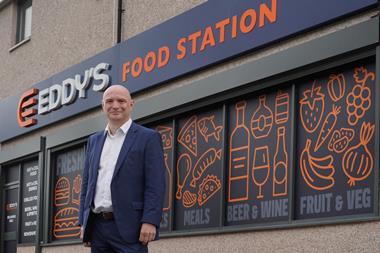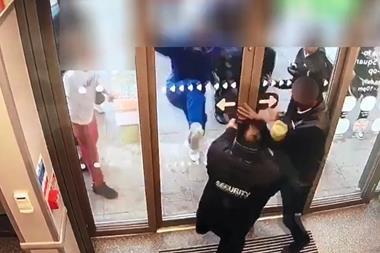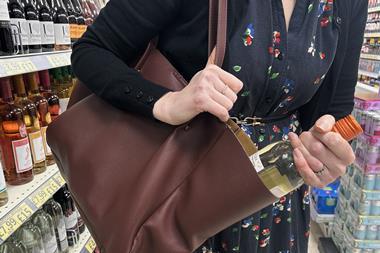Shop theft is a big concern for c-store owners and it is vital you’re prepared. Here retailers give a round-up of what works for them
It’s said that there are three things a retailer cannot avoid: death, taxes and store crime. While there’s not too much retailers can do to prevent the first two, they spend more than £3,900 a year per store trying to prevent the latter, according to the Association of Convenience Stores 2017 Crime Report.
“Just because we live in a low-crime area doesn’t mean that we take anything for granted,” says Christine Hope, owner of Hopes of Longtown, in Hereford.
She relies on CCTV and alarms to act as a deterrent to any would-be thief. She also works hard to ensure she has a good relationship with the community, knowing 70% of them by name. This, she says, can put off any light-fingered shoppers from thinking of taking advantage.
“We encourage everyone to come together and make sure that we are not seen as the enemy,” she says. “We don’t want people to look at us and go ‘They must be rich so they won’t mind if I take a packet of crisps or a chocolate bar’.”
Jonathan James, owner of James Convenience Retail, has to find a crime prevention strategy that works for his 105 stores. For him, CCTV is the one security measure he must have, with systems varying in price from £2,000 to £10,000.
He says: “All our stores have CCTV. Some also have tags on products and barriers at the door. We have defensive merchandising as well, so if we know a particular product is likely to be stolen then we might replace it or simply put less of it out on the shelf.”
It’s a tactic that Christine is also adopting. “We had the police in the other day and they said that a few changes to signage could make a big difference to security,” she explains.
Different areas of her store are now clearly signposted, allowing staff to look out for any suspicious behaviour around those products that attract shoplifters. High-value items are also being moved closer to staff’s eye-line or on displays at the till point, and some are being positioned higher up on the shelves.
When shoplifting hit unacceptable levels in one of its stores, Simply Fresh also looked at store design to help reduce shrinkage. Sukhjit Khera, co-founder of Simply Fresh, identified the weak spot in its Coventry store and installed an on-shelf equipment system from RTC that organises products and discourages ‘shelf sweeping’.
“It’s called a ProfitPusher system and is designed to stop more than one item from being taken at a time,” he explains. “The system has worked quite well and we are looking to install it in all of our stores in the future,” he says.
Sukhjit says that the system has been a cost-effective way to stop theft, especially for target items such as coffee, alcohol and personal hygiene products. “A bay of shelves costs about £50 to £60, which isn’t bad at all. The system discourages thieves and keeps the shelves tidy, so it’s a win-win,” he asserts.
In addition to the shelf organisers and re-positioning products, Sukhjit has installed a stock tracking system that looks at crime hot spots in a store and sends an alert when a specific product is taken off the shelf. “We also use the system along with CCTV, which gives staff more confidence when dealing with crime, to know that we have the evidence and the person on camera,” he explains.
Barrie Seymour, who owns Londis Littletown in West Yorkshire, has installed a whole range of different crime prevention measures to beef up his security. He says: “We now have ram bollards, extended wings on the shutters so you can’t pull them up, a cage over the cigarettes and a 16-camera CCTV unit, all of which act as a deterrent as well as making it harder for thieves to get to stock.
“The cigarettes cage has been the best investment. That cost only £500 and it works really well, protecting very valuable items. It’s a lot of money for a retailer now if cigarettes are taken. My tobacco gantry probably has about £1,000 to £2,000-worth of stock in it.”
Barrie also has another weapon in his armoury: Facebook. As police numbers fall – staffing levels could fall to 100,000 by 2020, the lowest level since the mid-1970s according to The Association of Police and Crime Commissioners – turning to the Facebook community to help identify criminals via CCTV pictures is becoming more common.
Barrie says the police are “finding it harder” to respond to cases of shoplifting and so he uses Facebook to fill the gaps. “We use Facebook to help catch criminals,” he says. “Quite often once CCTV footage is shared on Facebook, we find out who the thieves are and then let the police know.”
Security tags
One size doesn’t fit all
Does your store attract the opportunist thief chancing their hand, or a habitual thief making a living out of stealing? The results of A What Works: College of Policing study has shown that retailers would do well to consider the type of criminal usually seen in their stores before investing in their crime prevention strategy.
A study led by Dr Aiden Sidebottom, senior lecturer at UCL Department of Security and Crime Science, looked at tagging in eight retail outlets. The study concluded that opportunist shoplifters are more likely to be deterred by obvious, conspicuous tags and associated signage than seasoned, professional shoplifters, who are more likely to know methods to remove tagging systems. For these criminals, covert tags had a greater effect.
The report also identified areas for retailers to address, such as tags being incorrectly attached and alarms not being acted on.



























No comments yet